Tower of London – A Brief Tower of London History
The Tower of London is one of the most famous and historically significant sites in the United Kingdom. In this article, we will answer various questions about this famous castle. Where is the Tower of London located, who owns the Tower of London, and what is the Tower of London used for? Keep reading to learn more about the Tower of London and what has made it such an important site in the history of the United Kingdom!
A Look at the Tower of London
| Architect | Numerous |
| Date Constructed | 1078 – 1845 |
| Function | Museum and tourist destination |
| Materials Used | Stone, brick, wood, and metal |
| Height | 27 meters (89 ft) |
| Location | London, United Kingdom |
So, what is the Tower of London? In basic terms, the Tower of London is a large castle complex situated in London, and it sits against the northern side of the River Thames. It is one of the oldest buildings in London and one of the oldest standing structures in England in general. Although, parts of it are far older than other parts, as will be shown over the course of this discussion.
The Tower of London has been many things over the nearly thousand years of its existence.
However, one may wonder, when was the Tower of London built? When was it originally built? This ancient castle has seen many changes and alterations over the years, but its earliest origins date back as far as 1078 CE. What was the Tower of London originally used for then? It was a palace, but it has been used for a great many things over the course of its existence.
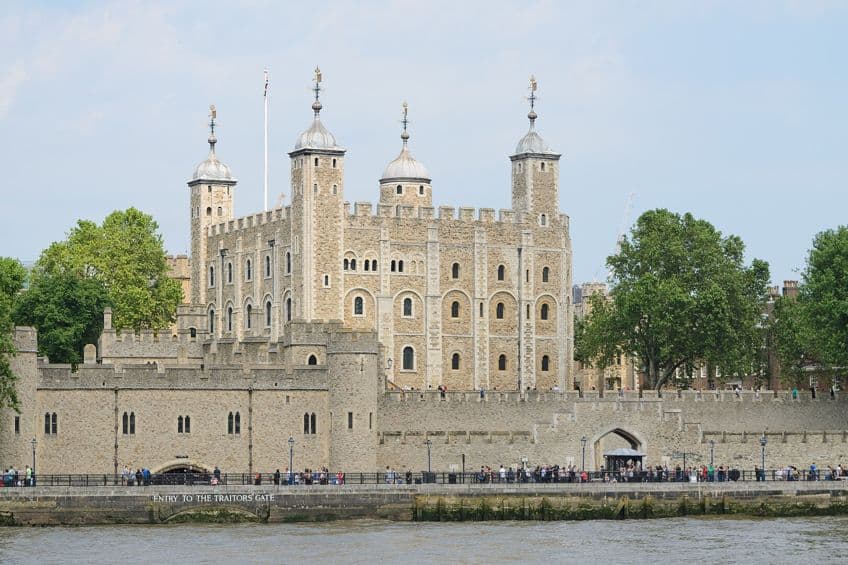
In fact, the Tower of London’s history has been a long and often notorious one. For many centuries, it served as a central prison location, and became so synonymous with this particular purpose that the colloquial expression “sent to the Tower” became a local idiom that meant “sent to prison”. The Tower of London has been around for a long time, and it has served in many roles, although those roles today are decidedly more tourist-oriented than they were in the past.
The Tower of London’s History
The Tower of London’s history is a lengthy one. To understand the origins of this structure, one must be at least somewhat familiar with the 1066 invasion of England by the forces of William the Conqueror. This event was one of the most significant in the history of England as these new Norman invaders would establish themselves as the ruling class and become the new monarchy and aristocracy of the country. This invasion also irrevocably changed the English language itself as more Norman French terms entered the vernacular and led to the development of Middle English.
However, William the Conqueror, when he took over the country, wasn’t necessarily thinking about linguistic changes that would rock the country to its core and was instead concerned with defense.
For this reason, he established the Tower of London as a royal residence as well as an important defensive position in the capital city. The Tower of London that was constructed under the order of this early monarch was not the same structure that exists today. In fact, in the earliest days, the Tower of London was little more than a wooden castle, but it was developed over time. The oldest stone portion of the structure was the White Tower, and this part of the building has never fallen. It was only completed during the 1080s and served William the Conqueror for the remainder of his life (and then served his descendants). The construction of the castle complex as a whole did not stop there though, and various changes and additions were made over the years to this immensely important piece of Norman architecture in the middle of London.

Various expansions were made to the Tower of London over the centuries, and some of these included things like the Bell Tower in the 13th century (which was headed by King Henry III), the Lanthorn Tower in the 13th century (which was headed by King Edward I), and the Bloody Tower in the 14th century (which was headed by King Edward III). These were hardly the only changes and additions made to the Tower of London over the years though, and there were even complete reconstructions of certain portions and a large wharf expansion in the late-14th century. One of the most important changes to the structure came in the 13th century, and that was the establishment of a royal mint at the famous castle. This was one of the longest-running functions of the Tower of London over the course of its history, as it produced the country’s coins until the early-19th century. This meant that the Tower of London was far more than a simple fortress over the course of its existence, but actually stood as one of the most important sites of the economy of the country at large.
Furthermore, the Tower of London was used for far more than a mint and palace. It was also, at various points, a prison, an armory, a treasury, an execution site, a menagerie, and even a public records office (the last of these probably being the least interesting of them all, although some of those records included incredibly important works, like the Domesday Book and even ancient works by William Shakespeare).
This means that there were various historical figures who were executed at this spot after being held in prison, there were numerous weapons kept there in preparation for any war that might reach the city, and a place to store some of the most valuable jewels in the country, and even its use to store various exotic animals until they were eventually moved to the London Zoo. However, there were once elephants and bears in the Tower of London.
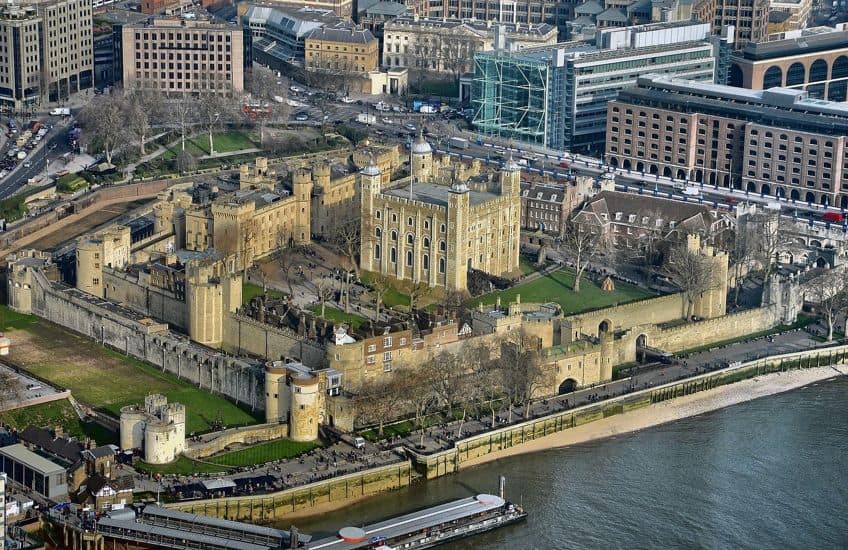
In recent years, things have changed a little. The Tower of London is no longer a palace as the British royals have long since established their residences as far more gloriously decadent palaces than a militarized fortress like the Tower of London. However, there are still many areas of interest within this ancient castle. For instance, the castle complex is home to a popular tourist attraction and museum that has made it one of the most popular in the city.
Furthermore, it may be worth asking the question: who lives in the Tower of London today? The reason this question is an interesting one is because it has served the castle well as part of the tourist-oriented aspects.
The Tower of London is home to the Yeomen Warders, also known as the Beefeaters. These members of the castle’s staff are ceremonial guards who have become a British icon. There are many others who also reside within the old castle, as there are about 150 people who call the Tower of London their home, but they will be further discussed in a section below.
The Architecture of the Tower of London
The Tower of London is a very old structure that has changed many times over the centuries, and as such, one cannot definitively point to any kind of overarching architectural style. The building does not exactly conform to anything of that nature. In addition, the Tower of London is not a singular building, but rather a complex of buildings, and as such, different parts of the structure make use of different styles.
In general, the Tower of London is made up of a number of buildings within two concentric rings. These rings are comprised of walls and a moat. This general structure was essentially established by the late-13th century, but further work did continue on the site long after this period.
The earliest portion of the site, as has been mentioned, is the White Tower. This part of the building was constructed in a fairly typical Norman medieval style, and as such, there are elements of Romanesque and Gothic architecture in this ancient portion of the tower. The White Tower itself is constructed of limestone and is composed of four turrets set around a rectangular plan. The walls are 4.6 m (or 15 ft) thick and stand at 27 m (or 89 ft) in height. This allowed this central point to remain the most secure in the entire complex of buildings.
Later, the Inner Ward was added, and this section enclosed the entire White Tower and added various other elements, such as the Bloody Tower and the Beauchamp Tower. These sections of the structure were constructed in the 13th century and made use of medieval styles and served many purposes, such as being used as prison space and records offices.
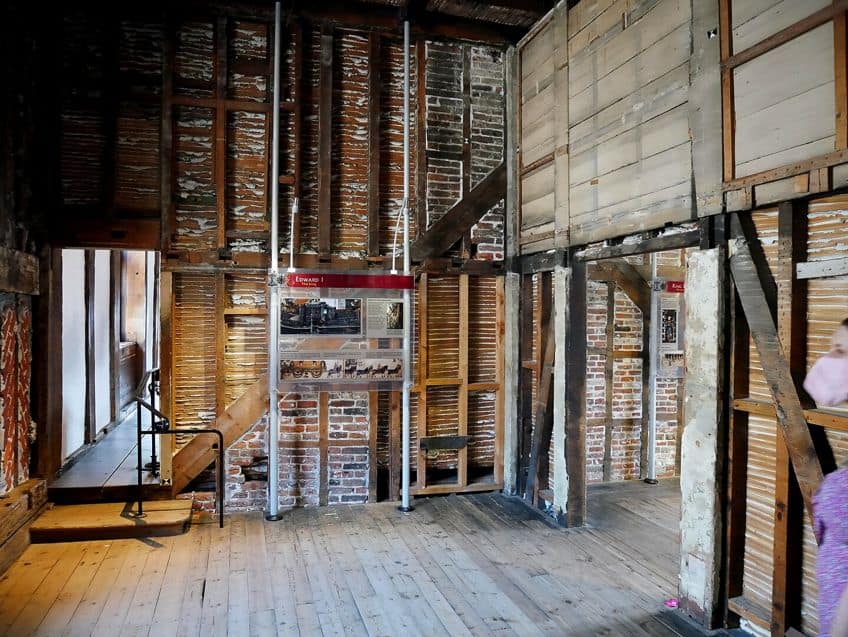
In addition to this, the Inner Ward attained numerous more practical additions, and many of them were added significantly later. For instance, the Queen’s House was added in the 16th century and the Waterloo Barracks were constructed in the mid-19th century. This should help to indicate the ways in which the architectural differences between different portions of the Tower of London could become so distinct from one another. It also makes it difficult to answer a question like: “Who built the Tower of London?” There were so many who constructed this structure over the years.
The Outer Ward, which was constructed after the Inner Ward, only further adds to this. There were numerous additions made within this second set of curtain walls that surrounds the Tower of London as a whole. There are numerous other towers, a large moat, various armories, and the 14th-century wharf that connected the Tower of London to the river (although it was expanded and reconstructed as late as the 17th century in parts).
Ultimately, the Tower of London is not one thing, but rather a variety of structures set within two concentric stone rings. The architecture of the structure as a whole reveals the Tower of London’s history in its very walls, and one can still visit it all to this day.
The Present Residents of the Tower of London
The Tower of London is, at present, home to about 150 people. These people are a combination of those who work in the castle and those who are the families of those who work there. The most famous of these groups is the Yeoman Warders, also known as the Beefeaters. These ceremonial guards perform numerous functions. They are, essentially, living pieces of history as well as performing the various responsibilities necessary in the castle. They also serve as tour guides for those who visit the site.
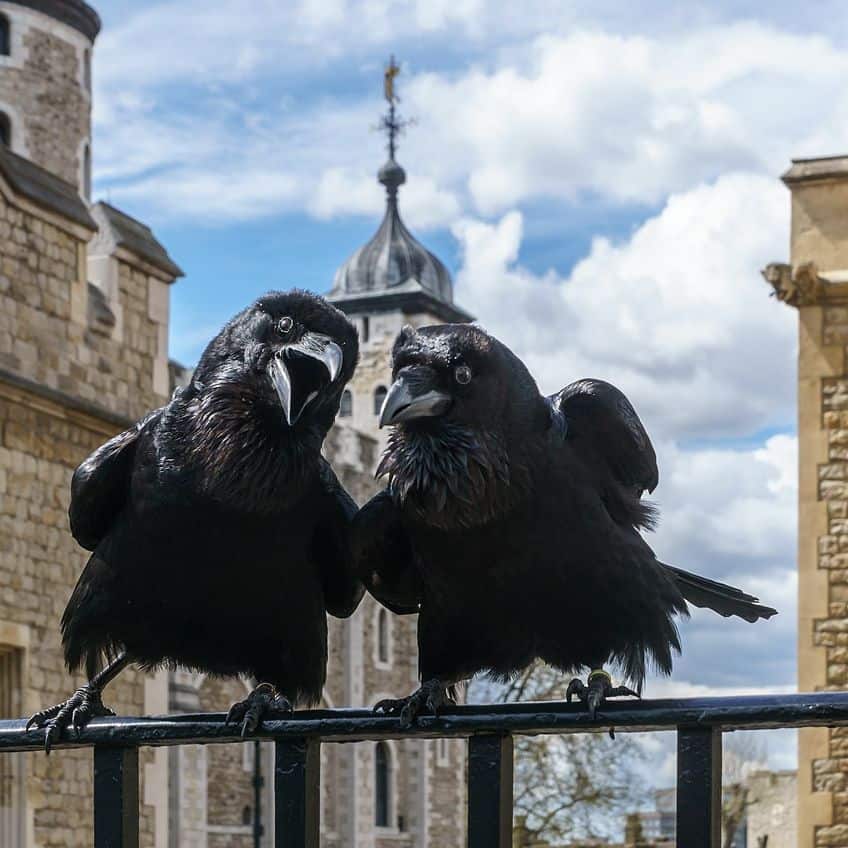
The Yeoman Warders are also interesting because of how they are all meant to be retired members of the British Armed Forces who have served a minimum of 22 years in the military. They have to have both a Long Service and Good Conduct Medal, and they must have been warrant officers. This means that while the Yeoman Warders are, effectively, ceremonial, they do have genuine military experience. Traditionally, they served as the wardens in the prison, but that is no longer a necessary function as the Tower of London has not been a prison for a very long time.
Other than the Yeoman Warders, there are also various administrative figures in the Tower of London. The Resident Governor effectively runs the structure as a whole, the Chaplain is in charge of the chapel, and there are various people who perform other functions in the castle, such as maintaining it for day-to-day use.
The other famous set of residents are ravens that live within the walls. These ravens are, as part of the tradition, never allowed to leave the Tower of London as it is said to bring bad luck. They are tended to by the Ravenmaster, who is a Yeoman Warder who is in charge of caring for the ravens. So, there are quite a few residents of the Tower of London to this day, but they are not all necessarily humans.
Famous Inmates in the Tower of London
The Tower of London served for many centuries as one of the most notorious prisons in the country, and many famous and important figures were housed there over the years. Some of these figures have become integral to the history of the United Kingdom as a whole, but many have fallen into obscurity. Some of the most famous include:
- Thomas More was imprisoned here in 1534. This famous political and religious figure was a chief opponent of Henry VIII’s dissolution of the Catholic church within the country (as he was an immensely devout Catholic). He was eventually executed here. He was later venerated by the Catholic church as a saint. He is, perhaps, most famous today for writing Utopia, the short novel that would give a name to a whole genre of fiction and philosophy.
- Anne Boleyn was imprisoned here in 1536. This figure was one of the many victims of Henry VIII. She was his second wife and was imprisoned in the Tower of London after being accused of adultery, treason, incest, and even witchcraft. She was later beheaded. She was far from the last of the many victims of Henry VIII.
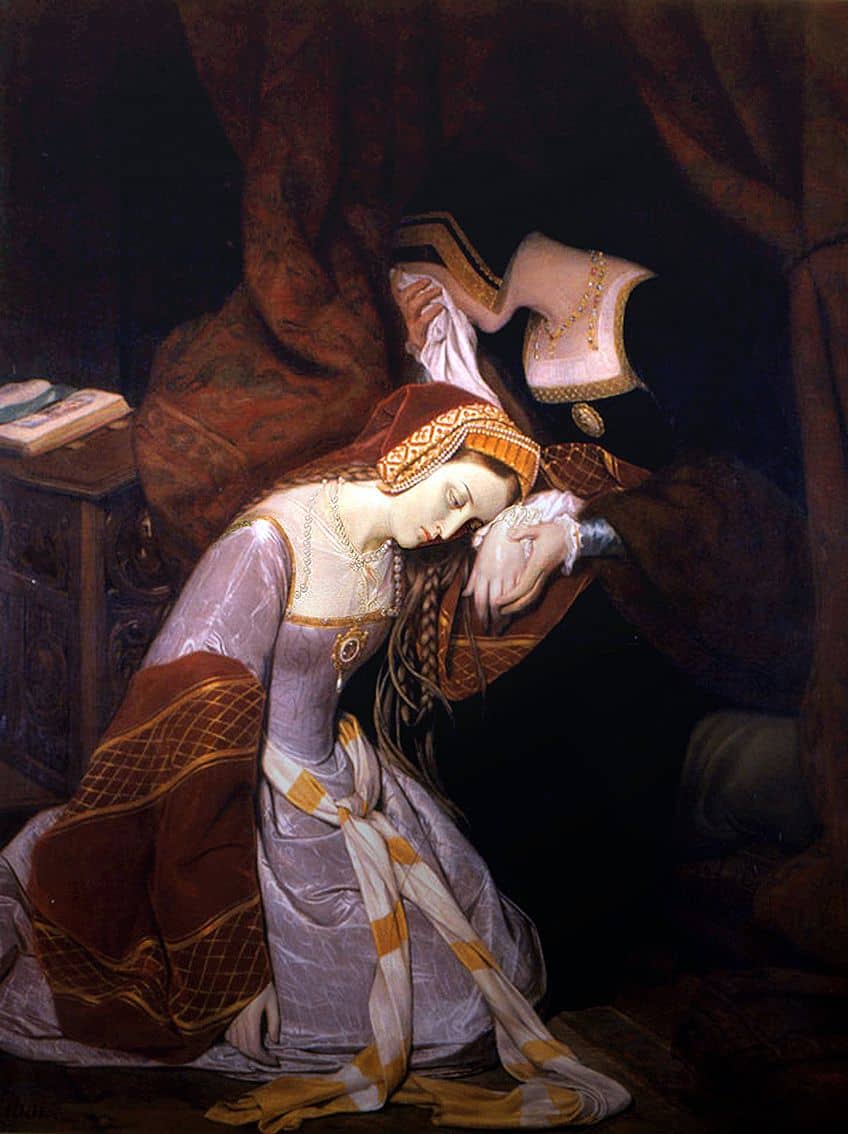
- Sir Walter Raleigh was imprisoned here in 1592. However, despite being a prisoner, he had a somewhat comfortable life as his wife and children were allowed to live with him. He wrote his famous The History of the World while imprisoned. He was eventually executed in 1618, but he was not one of the many prisoners who died in the Tower of London, he was instead executed in the Palace of Westminster.
- Guy Fawkes was imprisoned here in 1605. This immensely famous conspirator was part of the Gunpowder Plot that attempted to destroy both parliament and the monarch. However, he was captured, tortured, and ultimately executed. He was also quartered after his death. This was a particularly bloody display and meant to serve as a warning to all would-be traitors.
- Rudolf Hess was imprisoned here in 1941. This high-level member of the Nazi Party was one of the later figures to be imprisoned in the Tower of London. He, peculiarly, flew to Scotland in an attempt to vie for peace but was then captured and imprisoned. He was the last state prisoner to be imprisoned in the castle.
The Tower of London was the prison of far more than only these five people, but these are some of the most famous to have resided within its walls.
Some Interesting Tower of London Facts
The Tower of London is a fascinating place, so let us have a look at a few interesting facts about this ancient castle:
- The Ceremony of the Keys is performed every night. This is one of the oldest such military rituals in the world and involves a ceremonial locking of the tower, and it has been performed for over 700 years.
- The Crown Jewels are stored in the Tower of London. These jewels are some of the oldest and most expensive of their kind, and they are on display to be seen. They are removed for ceremonial purposes.
- Many ghosts supposedly haunt the old castle. The Tower of London was a prison for a long time, and many people died within its walls, and so there are many who believe that the ghosts of those who died continue to haunt the castle.

- The menagerie at the castle lasted for 600 years. While the animals in the Tower of London were later transferred to the London Zoo, there were many animals who lived within the walls and they did so for several hundred years.
- St Peter ad Vincula is located within the walls. This is a chapel that translates to “St Peter in Chains”, and it was the location within the walls of the Tower of London where the many executed prisoners were buried, and there are many famous corpses in this site.
This has been a collection of interesting Tower of London facts that are worth knowing. However, there is a lot more than is worth learning about this famous and ancient structure.
And that is our look at the Tower of London’s history and uses over the years. We have looked over a few interesting Tower of London facts in this article, such as the present residents of the structure, some of the prior “residents” in the form of prisoners of the Tower, and the history of the structure as a whole. Hopefully, you have learned a good deal about this famous castle complex situated in London. However, there is always much more to learn out there!
Frequently Asked Questions
What Is the Tower of London?
The Tower of London is a castle that has been around since 1078 and has remained one of the most notable spots in the United Kingdom for centuries. It has served many roles over its nearly millennia of existence. It has been a palace, a treasury, a mint, a menagerie, and, most famously, a prison. Today, it has become one of the premier tourist attractions in the city and a World Heritage Site.
When Was the Tower of London Built?
The origins of the Tower of London go back as far as 1078 when it was established by the new Norman ruler, William the Conqueror. However, it has been significantly expanded over the years. While William the Conqueror may have overseen the construction of the earliest portions of the structure, the various monarchs that followed on from him made numerous changes and instituted various expansions to the structure as a whole.
Who Built the Tower of London?
The earliest origins of the Tower of London lie with Gundulf of Rochester. This Norman figure was a bishop, who also served as an architect and was responsible for the design of the White Tower. However, there have been numerous other architects and builders over the years. Construction of the Tower of London lasted until the mid-19th century, and as such, there have been countless individuals who have contributed to this famed structure over the years.
What Was the Tower of London Originally Used For?
When the Tower of London was first built, it was meant to serve as a fortress and palace. However, the structure was intentionally built to be a large and menacing castle that overlooked the newly conquered city. This meant that it served as a symbol of power and authority over London. It would later attain more tangible functions, such as being used as a prison and a royal mint.
Where Is the Tower of London Located?
The Tower of London is situated in London, as the name suggests, but it is specifically located on the northern side of the River Thames in the Tower Hamlets borough of the city. This also means that the Tower of London is situated in a central location in the city, which makes sense as it was constructed as a symbol of Norman power. It needed to be central to help serve this particular function.
Who Owns the Tower of London?
The Tower of London is, strictly speaking, owned by the present monarch. At the time of writing, this would make the technical owner of the castle King Charles III. However, it is actually part of the royal estate and, as such, is not actually the private property of the monarchs and is instead symbolically their property. Furthermore, the monarchs do not actually control it, but they have a hand in its general management, as they do appoint the official who is in charge of the administration of the castle as a whole.
Who Lives in the Tower of London?
At present, the Tower of London is the residence of over 150 people. These people are all workers, and the most famous of them all are the Yeoman Warders, also known as the Beefeaters, and they serve as the ceremonial guards of the castle. However, there are also various others who live and work in the Tower of London, such as the various administrative figures, like the Resident Governor, and even a number of ravens who have a ceremonial position within the Tower of London.
Justin van Huyssteen is a writer, academic, and educator from Cape Town, South Africa. He holds a master’s degree in Theory of Literature. His primary focus in this field is the analysis of artistic objects through a number of theoretical lenses. His predominant theoretical areas of interest include narratology and critical theory in general, with a particular focus on animal studies. Other than academia, he is a novelist, game reviewer, and freelance writer. Justin’s preferred architectural movements include the more modern and postmodern types of architecture, such as Bauhaus, Art Nouveau, Art Deco, Brutalist, and Futurist varieties like sustainable architecture. Justin is working for artfilemagazine as an author and content writer since 2022. He is responsible for all blog posts about architecture.
Learn more about Justin van Huyssteen and about us.
Cite this Article
Justin, van Huyssteen, “Tower of London – A Brief Tower of London History.” artfilemagazine – Your Online Art Source. July 4, 2023. URL: https://artfilemagazine.com/tower-of-london/
van Huyssteen, J. (2023, 4 July). Tower of London – A Brief Tower of London History. artfilemagazine – Your Online Art Source. https://artfilemagazine.com/tower-of-london/
van Huyssteen, Justin. “Tower of London – A Brief Tower of London History.” artfilemagazine – Your Online Art Source, July 4, 2023. https://artfilemagazine.com/tower-of-london/.


